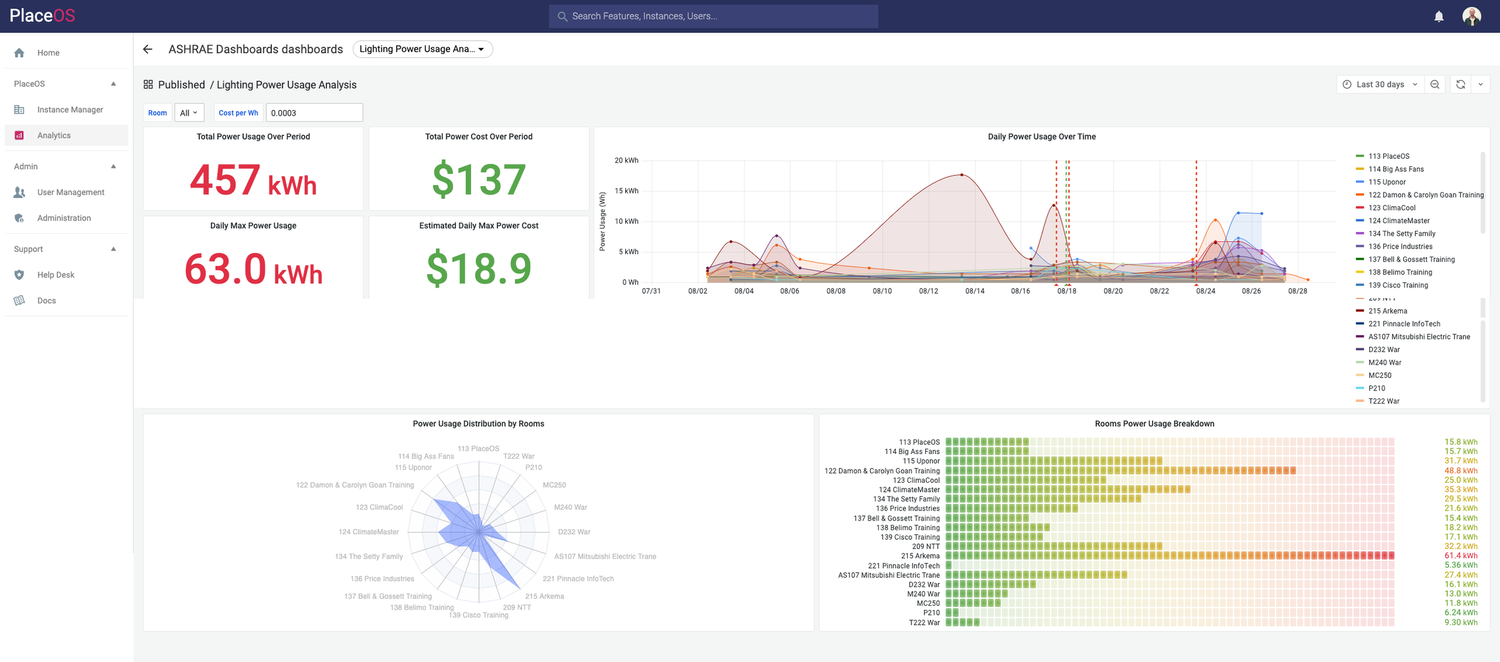Smart Building Energy Analytics
Last edition of a better place I spoke about common data traps that organizations stumble into, one of them being crazy dashboards with a million metrics on them. This time I’m going to talk about Energy Analytics and how to set yourself up for success using them.
Have clear goals
This is probably one of the most important elements to establish. If you have a goal that’s unclear or too broad, then you’re setting yourself up for failure. You won’t be able to define clear KPIs to help achieve that goal. If the goal is too broad, you’ll have too many KPIs to include, remember the crazy dashboard thing?
A bad example might be, “We want to improve our building’s energy efficiency”.
While the goal is admirable, it’s too broad and will make it difficult to see what’s contributing to the outcome. Is it lighting, HVAC, in-room tech?
It’s better to break it down into smaller chunks. For example you could do it by:
- Meeting room
- Lighting’s Energy Usage
- Cost
There are two dimensions, space and technology, as well as the metrics, energy usage and cost. This makes it easy to create a time series dashboard that displays clear and concise information.
Lighting Energy Usage & Cost by Meeting Room

Taking action
Once you have got clear data being track over time being displayed in a simple dashboard. Now you’re ready to start taking action. As I’ve stated before, it’s not enough having a passive system that collects and displays information, you need to take action!
This is where us at PlaceOS see the biggest area of opportunity. Using this information to make clear and informed decisions but also, to set up workflow automation.
Using PlaceOS, you can set conditions which trigger actions automatically, for example:
- When a meeting room is booked, automatically turn lighting, HVAC, & AV on 5 minutes before the meeting start time.
- If no occupancy is detected 15 minutes after the meeting start time, turn everything off again.
- Send a notification to Facilities when abnormal power usage is detected.
At this point, it’s just about analyzing the data. You can compare rooms with and without this technology installed to see how much energy you’re saving over a given time period.
In closing
These are just some examples of what’s possible, it really depends on two things, what your goals are and what technology we’re connected with. I’d also like to add, in most cases, using PlaceOS to achieve these outcomes doesn’t require any additional investment in new technology. It’s integrating with existing technology which opens up the lines of communication. Essentially doing more with less.
If you’d like to learn more about what we’re doing in the energy space, our latest podcast episode is a great place to start. Alternatively you can speak with an expert from the team and they can run you through everything you need to know!